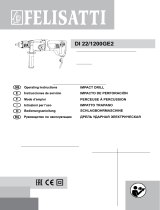Valex 1421478 is a mixer that can be used for a variety of tasks, including mixing, blending, and whipping. It features a powerful motor and a variety of attachments, making it a versatile tool for any kitchen.
Some of the capabilities of the Valex 1421478 mixer include:
- Mixing: The mixer can be used to mix a variety of ingredients, including wet and dry ingredients. It is also capable of mixing heavy doughs and batters.
- Blending: The mixer can be used to blend a variety of ingredients, including fruits, vegetables, and nuts. It can also be used to make smoothies and shakes.
- Whipping: The mixer can be used to whip cream, egg whites, and other ingredients. It can also be used to make meringues and other desserts.
Valex 1421478 is a mixer that can be used for a variety of tasks, including mixing, blending, and whipping. It features a powerful motor and a variety of attachments, making it a versatile tool for any kitchen.
Some of the capabilities of the Valex 1421478 mixer include:
- Mixing: The mixer can be used to mix a variety of ingredients, including wet and dry ingredients. It is also capable of mixing heavy doughs and batters.
- Blending: The mixer can be used to blend a variety of ingredients, including fruits, vegetables, and nuts. It can also be used to make smoothies and shakes.
- Whipping: The mixer can be used to whip cream, egg whites, and other ingredients. It can also be used to make meringues and other desserts.












-
 1
1
-
 2
2
-
 3
3
-
 4
4
-
 5
5
-
 6
6
-
 7
7
-
 8
8
-
 9
9
-
 10
10
-
 11
11
-
 12
12
Valex 1421478 Owner's manual
- Category
- Power tools
- Type
- Owner's manual
Valex 1421478 is a mixer that can be used for a variety of tasks, including mixing, blending, and whipping. It features a powerful motor and a variety of attachments, making it a versatile tool for any kitchen.
Some of the capabilities of the Valex 1421478 mixer include:
- Mixing: The mixer can be used to mix a variety of ingredients, including wet and dry ingredients. It is also capable of mixing heavy doughs and batters.
- Blending: The mixer can be used to blend a variety of ingredients, including fruits, vegetables, and nuts. It can also be used to make smoothies and shakes.
- Whipping: The mixer can be used to whip cream, egg whites, and other ingredients. It can also be used to make meringues and other desserts.
Ask a question and I''ll find the answer in the document
Finding information in a document is now easier with AI
in other languages
- italiano: Valex 1421478 Manuale del proprietario
Related papers
Other documents
-
FIAM. eTensil Use and Maintenance Manual
-
 Felisatti DI 22/1200GE2 Operating Instructions Manual
Felisatti DI 22/1200GE2 Operating Instructions Manual
-
Parkside PWS 230 SE - MANUEL 2 Operation and Safety Notes
-
Parkside PMFW 200 Operation and Safety Notes
-
Parkside PSSA 18 A1 Translation Of The Original Instructions
-
Fox F12-921A User manual
-
Parkside PAMFW 10.8 A1 Operating instructions
-
Parkside POF 1200 C2 Translation Of The Original Instructions
-
Parkside PEC 200 SE Operation and Safety Notes
-
Parkside PES 200 B1 Operation and Safety Notes






















